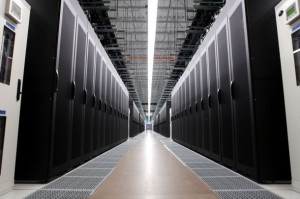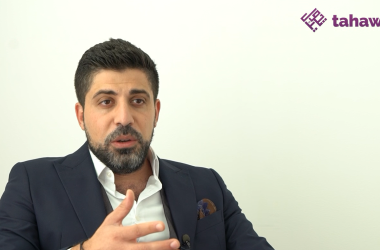 A fundamental change in server architecture could be on tap as companies look to cut data centre costs and power consumption.
A fundamental change in server architecture could be on tap as companies look to cut data centre costs and power consumption.
Low-power processors from companies like ARM could be in full use in data centres by 2013, and mixing them up with graphics chips could bring massive performance improvements and power savings, according to analysts. Experiments around implementing ARM processors in servers are already underway, and graphics chips are already being used in some of the world’s fastest supercomputers.
Power efficiency has been among the top determining factors in server purchases as customers keep costs in mind while deploying applications. This year, there was a spike in the build-out of cloud and high-performance servers around the hyperscale model, in which servers are densely packed to cut power consumption while scaling performance. For further power savings, companies in the future could consider using servers with low-power ARM processors, which are used in most tablets and smartphones today.
“With the current size of the install base, shifts in architectures have always proven to be a gradual affair extended over many years.
However, as the world is becoming more mobile and the amount of data is increasing, next-generation data centres need to become more dynamic and ready to support migration to the cloud. There is a need for servers to adapt which is driving higher growth in the blade, hyperscale, and converged server architectures,” says Basil Ayass, Enterprise Product Manager, Dell Middle East.
Anoop Sharda, CTO, Buzinessware, points out IT markets experience a fundamental shift in mission, architectures, roles and technology standards. “As the world shifts move towards the cloud environment, there is a growing demand towards the centralised, high power data centres, which can host big and powerful servers providing the services on the go. Due to high power consumption and heat dissipation concerns gathering momentum across the data centre industry, there is a going to be a focus to look at the alternative solutions which consumes less power and are yet provide similar power and performance. The drive to look for the alternative solutions for sure is going to make us have fundamental shift in the server architecture and look beyond the traditional servers available in the market.”Different vendors have different takes on the sea-change taking place in the server market and architectures. Andreas Weiss, Director of Systems Technology Group, GBM, says hybrid computing is the best form of server architecture. “With the announcement of zEnterprise EC12 we are seeing IBM’s commitment to fit for purpose methodology personified. The concept of ‘data centre in a box’ is becoming a reality, and we are seeing the journey towards it being able to cater to Intel, Unix and mainframe requirements in one single management framework.”
Cisco espouses the cause of fabric-based architecture. “As companies are coming under pressure to adapt to very rapidly changing business demands, so the underlying data centre architecture has to be able to dynamically shift. Fabric computing changes this.
Within a fabric, servers become pools of resources and are able to take on a whole new persona. Thus applications can now be moved from a lower performing server to higher performing server without the need to rebuild everything from the server, network and storage,” says Mohannad Abuissa, Systems Engineering Manager, Cisco UAE.
The growth of the cloud is partly driving server sales, with many companies building out public and private clouds. Many two-socket x86 servers were purchased for cloud implementations around the hyperscale model, which allows new servers to be easily plugged in to scale performance. Servers in the hyperscale model are also being used for applications such as analytics and business intelligence.
“The build out of the cloud is definitely contributing to server sales. The most popular option for building out public cloud infrastructure is the hyperscale x86 server models. Dell has established itself in this space by gaining experience in building clouds with some of the world’s largest cloud computing providers like Microsoft, Bing Maps and eBay,” says Ayass.
Sharda agrees that cloud is one of the main drivers for the sales in today’s IT market. “As all solutions and service providers move towards the model of Software as Service (SaaS) platform, hyperscale servers which can handle multiple virtual instances are deployed at the data centre to support the growing demand. Hyperscale computing refers to the infrastructure and provisioning needed in distributed computing environments for effectively scaling from several servers to thousands of servers. As data centres deploy more and more cloud solutions, hyperscale servers are the demand of the day.”
Recipe for change
Which technology transitions are impacting customer demand for x86, Unix and mainframe-class systems? “There is a big move of following the change from consolidation, virtualisation, automation and cloud where the different types of server architectures are getting caught up on this. RISC based architectures are particularly under fire as x86 processors can deliver similar levels of processing power,” says Abuissa.
Ayass echoes a similar opinion and says without doubt x86 is today’s architecture of choice. “x86 is today’s architecture of choice. Dell is fully committed to x86, as we don’t offer any Unix or mainframe-class systems. These legacy architectures have proven costly over time and lack the flexibility and efficiency of the x86 architecture. Dell’s commitment to X86 has proven successful and recently validated by our year-over-year x86 server market growth which outpaced the worldwide market and the next two largest competitors, according to IDC’S Q2 2012 Worldwide Quarterly Server Tracker.”
Weiss from GBM adds the workload type, SLA and techno-commercial value drives the choice of technology, and we are slowly seeing an intersection of technological capabilities. “X86 architecture is looking at providing mainframe qualities of service, whereas mainframes are trying to provide intel-like flexibility. A new generation of integrated expert systems, such as IBM Pure Flex with server, storage, networking, physical and virtual management, are available and are ideal for virtualisation and cloud computing.”
Dense servers with ARM processors could be an alternative to x86-based technology in the coming years as IT managers factor in density and lower-power requirements. Analysts have said that a congregation of low-power ARM processors could provide more power-efficient processing of cloud transactions than traditional x86 server chips like Intel’s Xeon or AMD’ Opteron, which are more power hungry. The chips based on ARM processors would however lag x86 chips on data-intensive tasks such as database and ERP (enterprise resource planning).
Some companies this year introduced experimental servers with ARM processors. HP has announced server designs with a chip from Calxeda, which includes a quad-core ARM processor and consumes as little as 1.5 watts of power.
“With the current trend it is very much possible that low power processors will be in full use in the data centre. But the journey is long with the tough competition from makes x-86 processors like Intel and AMD. Linux flavors can run on RISC based processors which are produced by ARM but Windows platform had been written mainly for x86 platform. Microsoft has launched ARM based operating system, but still all the applications for Windows need to be rewritten to support ARM processors. In my opinion, it is a very long journey for low power processors to enter in the main stream and provide a full scale solution for data centres,” says Sharda.
Analysts also agree that switching from x86 to ARM could be a challenge due to the hardware and software issues. Customers are already struggling with decisions on purchases with many server options available, including workload-optimised systems that bundle the server, storage, networking and software. Switching to ARM could be disruptive and have its benefits, but it may take time to implement.
At the moment, x86 rules the roost as the architecture of choice and switching over to a new architecture isn’t going to happen overnight. But, it sure is an idea whose time may come sooner than later.





